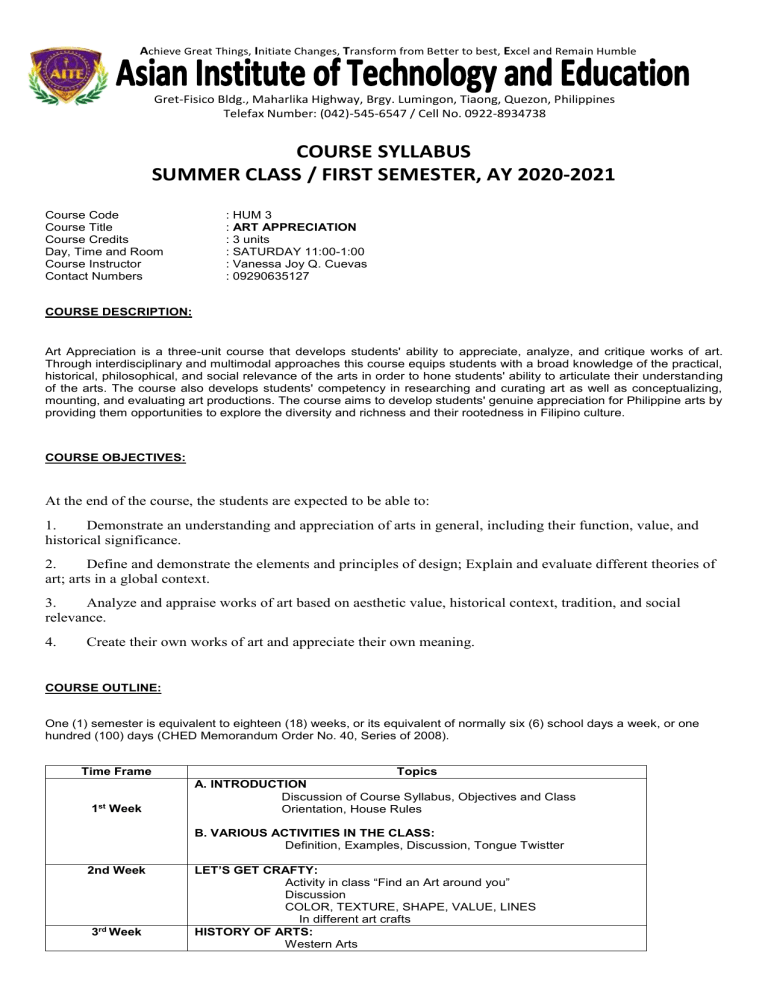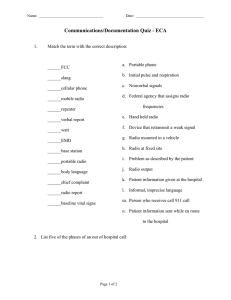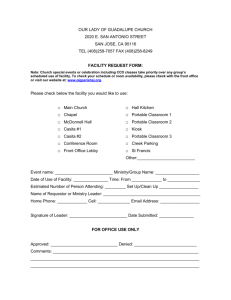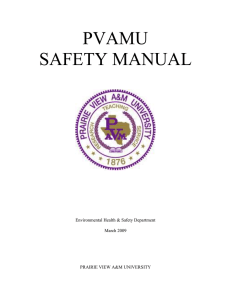
Achieve Great Things, Initiate Changes, Transform from Better to best, Excel and Remain Humble Gret-Fisico Bldg., Maharlika Highway, Brgy. Lumingon, Tiaong, Quezon, Philippines Telefax Number: (042)-545-6547 / Cell No. 0922-8934738 COURSE SYLLABUS SUMMER CLASS / FIRST SEMESTER, AY 2020-2021 Course Code Course Title Course Credits Day, Time and Room Course Instructor Contact Numbers : HUM 3 : ART APPRECIATION : 3 units : SATURDAY 11:00-1:00 : Vanessa Joy Q. Cuevas : 09290635127 COURSE DESCRIPTION: Art Appreciation is a three-unit course that develops students' ability to appreciate, analyze, and critique works of art. Through interdisciplinary and multimodal approaches this course equips students with a broad knowledge of the practical, historical, philosophical, and social relevance of the arts in order to hone students' ability to articulate their understanding of the arts. The course also develops students' competency in researching and curating art as well as conceptualizing, mounting, and evaluating art productions. The course aims to develop students' genuine appreciation for Philippine arts by providing them opportunities to explore the diversity and richness and their rootedness in Filipino culture. COURSE OBJECTIVES: At the end of the course, the students are expected to be able to: 1. Demonstrate an understanding and appreciation of arts in general, including their function, value, and historical significance. 2. Define and demonstrate the elements and principles of design; Explain and evaluate different theories of art; arts in a global context. 3. Analyze and appraise works of art based on aesthetic value, historical context, tradition, and social relevance. 4. Create their own works of art and appreciate their own meaning. COURSE OUTLINE: One (1) semester is equivalent to eighteen (18) weeks, or its equivalent of normally six (6) school days a week, or one hundred (100) days (CHED Memorandum Order No. 40, Series of 2008). Time Frame 1st Week Topics A. INTRODUCTION Discussion of Course Syllabus, Objectives and Class Orientation, House Rules B. VARIOUS ACTIVITIES IN THE CLASS: Definition, Examples, Discussion, Tongue Twistter 2nd Week 3rd Week LET’S GET CRAFTY: Activity in class “Find an Art around you” Discussion COLOR, TEXTURE, SHAPE, VALUE, LINES In different art crafts HISTORY OF ARTS: Western Arts Reporting by Partners Prehistoric Arts 4TH Week Time Frame 5TH Week 6TH Week (Class Discussion (G-meet classroom) artwork “BLOTS AND DOTS” PRELIMINARY EXAMINATION Topics REPORTING / DISCUSSION (Class Discussion (G-meet classroom) REPORTING / DISCUSSION 7th Week (Class Discussion (G-meet classroom) REPORTING / DISCUSSION 8th Week (Class Discussion (G-meet classroom) MIDTERM EXAMINATION 9th Week REPORTING / DISCUSSION 10th Week (Class Discussion (G-meet classroom) REPORTING / DISCUSSION 11th Week (Class Discussion (G-meet classroom) Artwork “Botanical Garden” REPORTING / DISCUSSION (Class Discussion (G-meet classroom) 12th Week 13th Week SEMI-FINAL EXAMINATION REPORTING / DISCUSSION (Class Discussion (G-meet classroom) Art work “Pull String” 14th Week REPORTING / DISCUSSION 15th Week (Class Discussion (G-meet classroom) REPORTING / DISCUSSION 16th Week (Class Discussion (G-meet classroom) Artwork “3D design” REPORTING / DISCUSSION 17th Week 18TH WEEK (Class Discussion (G-meet classroom) FINAL EXAMINATION SUBMISSION OF PORTFOLLIO COURSE REQUIREMENTS AND GRADING SYSTEM: Major Exams Class Participation Quizzes/Seatworks Assignments/Projects Attendance and Behavior 30% 20% 20% 20% 10% 100% Every grading period REFERENCES: Websites, movies, and articles/research papers posted online. Prepared by: Vanessa Joy Q. Cuevas Teacher Achieve Great Things, Initiate Changes, Transform from Better to best, Excel and Remain Humble Gret-Fisico Bldg., Maharlika Highway, Brgy. Lumingon, Tiaong, Quezon, Philippines Telefax Number: (042)-545-6547 / Cell No. 0922-8934738 Preliminary Examination Name:_______________________________ Score:________________ Course: _____________________________ Date:_________________ I. Identify the underlying history of the presented Artwork; 20points. Color:_______________________________ Value:_______________________________ Lines:_______________________________ Shape:_______________________________ Texture (based on your visual)______________________________________ II. Prehistoric Art Choose the best answer from the box. Cave paintings Lithos Stationary Pigment Nomadic Bradshaws Dirt or Charcoal Chipped stone tools Stone Age Venus figurines Middle Old Portable Geometric Shigir Idol ________________1. Known as the oldest wooden sculpture. Shigir Idol ________________2. Mesolithic art is best known as? Geometric ________________3. Meso means? Middle ________________4.are a unique form of rocks that found in Southern Australia. Bradshaws ________________5. This kind of paint that manufactured from mixed charcoal, blood of animals and different minerals. Stationary ________________6. These things were carved from stone and bone antler. Portable ________________7. This is a sign of Fertility during Paleolithic period. Venus figurines ______________8. Kind of tools that people used during the Paleolithic period. Chipped stone tools ________________9. ____________are the people that no permanent place to live during Paleolithic era. NOMADIC _______________10. The same meaning of Stone. LITHOS _______________11. Synonyms of Paleo. OLD _______________12. This is what you called the first age. STONE AGE _______________13. Some cave paintings are covered by this material during Paleolithic period. DIRT OR CHARCOAL _______________14. Paintings inside caves are yielded by this mineral. PIGMENT _______________15. The first paintings of all time. CAVE PAINTINGS III. Identify the following: if it is Portable and if it is Stationary art. _________1. Figurines - Portable _________2. Canvass - Portable/stationary _________3. Tiger figure in a wall - Portable/stationary _________4. Painting on the wall - Portable/stationary _________5. Paper mache art - Portable _________6. Sculpture - Portable/stationary _________7. Ice sculpture Portable/stationary _________8. Origami - Portable _________9. Blots and dots - Portable _________10. Stationery - Portable IV. 1. 2. 3. 4. 5. Give the meaning of the following base on your understanding. Religion and the beliefs The Warka Vase is made from alabaster Utilitarian objects can be aesthetically pleasing The Ancient Egyptians used picture words to write called hieroglyphics. effigy vessels (animal, deity, human head) is still not clear to scholars. 1. :of the cultures of the ancient world played a huge role in the art that was created. 2. a fine-grained, translucent form of gypsum, typically white, often carved into ornaments. 3. Pleasing/beautiful 4. It is a very old form of writing that they started using as early as 3000 B.C. Hieroglyphics is a very complicated way of writing involving thousands of symbols. 5. a sculpture or model of a person.


